1. Introduzzjoni
Magnesium alloy is a metallic material primarily based on magnesium, with the addition of other elements to enhance specific properties such as strength, Durabilità, u reżistenza għall-korrużjoni.
With a density of approximately 1.74 g / cm³, magnesium is the lightest structural metal, making its alloys highly attractive for applications where weight reduction is a critical factor.
This characteristic has led to a surge in interest across various industries, inkluż aerospazjali, karozzi, elettronika, u oġġetti tal-konsumatur.
2. What Is a Magnesium Alloy?
A magnesium alloy consists of magnesium (Mg) plus up to ~10wt% of other elements (Al, Zn, Mn, rare earths, eċċ.), designed to enhance mechanical properties, imġieba tal-korrużjoni, u castability.
Since magnesium is the lightest structural metal (density ≈ 1.75 g / cm³), its alloys find critical applications wherever weight reduction and vibration damping are paramount,
ranging from automotive components to aerospace structures and portable electronics.

Primary alloying elements
| Alloying Element | Kontenut Tipiku | Principal Role |
| Aluminju (Al) | 1–9 wt% | Strengthens via Mg₁₇Al₁₂ precipitates; improves castability and corrosion resistance in AZ series |
| Żingu (Zn) | 0.3–2 wt% | Promotes age hardening; enhances creep resistance at elevated temperatures |
| Manganiż (Mn) | 0.1–1 wt% | Scavenges iron impurities to boost overall corrosion performance |
| Earths Rari (RE) | 1–5 wt % | Refine grain structure; stabilize elevated‐temperature phases in WE series |
| Zirconium (Zr) | 0.1–0.5 wt% | Acts as a grain refiner in wrought alloys, improving ductility and toughness |
3. Major Magnesium Alloy Families
| Family | Key Alloy | Kompożizzjoni (madwar.) | Karatteristiċi | Typical Uses |
| AZ Series | AZ31, AZ61, AZ91 | Mg–Al (3–9 %), Zn (1 %) | Formabilità eċċellenti (AZ31); high cast strength (AZ91) | Pannelli tal-karozzi, body frames |
| AM Series | AM60, AM80 | Mg–Al (6–8 %), Mn (0.2 %) | Good die-casting performance, moderate ductility | Die-cast housings, steering wheels |
| WE Series | We43 | Mg–Y (4 %), RE (3 %), Zn | Superior high-temperature strength and creep resistance | Aerospace structural components |
| MRI-Safe | QE22, QE26 | Mg–Zn–Ca or Mg–Zn–Ca–Sr | Controlled corrosion rates; biocompatible | Bioresorbable medical implants |
| Elektron™ | Elektron 21, Elektron 675 | Mg–RE (3–10 %), Zn | Trademarked high-RE content for extreme environments | Military hardware, high-temp tooling |
4. Physical Properties of Magnesium Alloys
Magnesium alloys combine a unique set of physical characteristics—ultra-light density, moderate thermal and electrical conductivity, u excellent vibration damping-that distinguish them from both ferrous and other non-ferrous metals.
Key Physical Properties at a Glance
| Proprjetà | AZ31 | We43 | Aluminum 6061-T6 | Titanium Ti-6Al-4V |
| Densità (g / cm³) | 1.77 | 1.80 | 2.70 | 4.43 |
| Firxa tat-tidwib (° C.) | 630 - 650 | 645 - 665 | 580 - 650 | 1 600 - 1 650 |
| Konduttività termali (W / m · k) | 72 | 60 | 155 | 7 |
| Konduttività elettrika (% IACS) | 40 | 35 | 45 | 1.2 |
| Modulu elastiku (GPA) | 45 | 42 | 69 | 110 |
| Damping Capacity | Eċċellenti | Eċċellenti | Moderat | Baxx |
| Imġieba Manjetika | Mhux manjetiku | Mhux manjetiku | Mhux manjetiku | Paramagnetic |
5. Mechanical Properties of Magnesium Alloys
Magnesium alloys deliver a compelling blend of saħħa, duttilità, u Reżistenza għall-għeja—attributes that engineers exploit in weight-sensitive, high-performance applications.
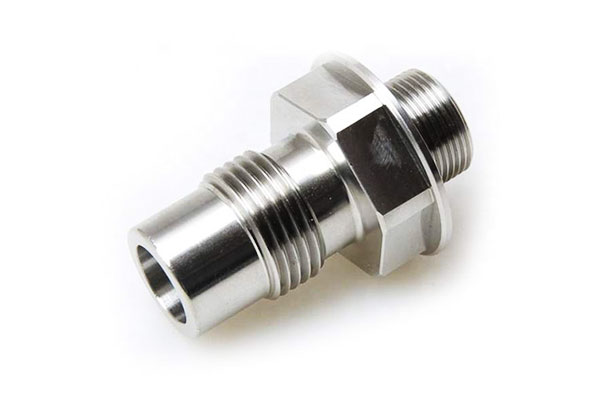
Comparative Mechanical Data
| Proprjetà | AZ31-H24 | AZ91-HP | WE43-T6 | AZ61 | Unità |
| Qawwa tat-tensjoni (Rm) | 260 | 200 | 280 | 240 | MPA |
| Saħħa tar-rendiment (RP0.2) | 145 | 110 | 220 | 170 | MPA |
| It-titwil fil-waqfa (A) | 12 | 5 | 8 | 10 | % |
| Qawwa tal-għeja (10⁷ Ċikli) | ~95 | ~70 | ~120 | ~85 | MPA |
| Ebusija ta 'brinell (HB) | 60 | 55 | 80 | 65 | HB |
6. Corrosion Behavior & Surface Protection
Intrinsic corrosion tendencies in different environments
Magnesium is a highly reactive metal, and magnesium alloys have an inherent tendency to corrode in many environments.
In the presence of moisture and oxygen, magnesium reacts to form magnesium hydroxide on the surface.
Madankollu, this initial layer is porous and does not effectively protect the underlying metal.
In saltwater environments, magnesium alloys corrode even more rapidly due to the presence of chloride ions, which can penetrate the surface film and accelerate the corrosion process.
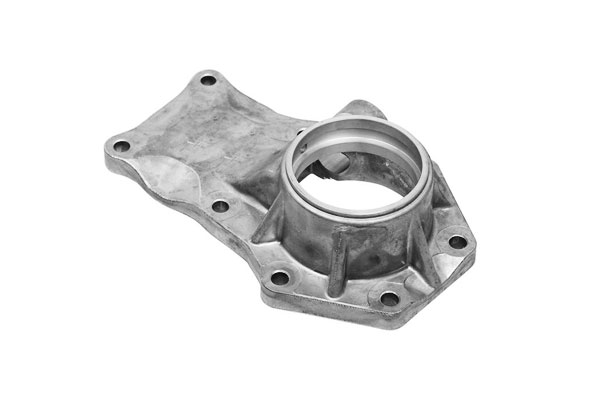
Galvanic and pitting corrosion mechanisms
Pitting corrosion:
Pitting occurs when the surface film on the magnesium alloy is locally disrupted, allowing the underlying metal to corrode rapidly in small areas.
Chloride ions are particularly effective at initiating pitting corrosion in magnesium alloys. Once a pit is formed, it can grow deeper and wider, potentially leading to component failure.
Galvanic corrosion:
When magnesium alloys are in contact with more noble metals (bħal ram, Nickel, or stainless steel) in an electrolyte (such as water or saltwater), korrużjoni galvanika tista 'sseħħ.
Manjesju, being more electropositive, acts as the anode and corrodes preferentially, while the more noble metal acts as the cathode.
This type of corrosion can be mitigated by proper design, such as avoiding direct contact between dissimilar metals or using insulating materials.
Common protective treatments: anodizzanti (MAO), conversion coatings, kisjiet organiċi
Anodizzazzjoni (MAO-Micro-Arc Oxidation):
MAO is a type of anodizing process that forms a thick, iebes, and porous oxide layer on the surface of magnesium alloys.
This layer provides good corrosion resistance and can also be further sealed or coated to enhance its properties.
MAO-treated magnesium alloys are used in various applications, from automotive components to aerospace parts.
Kisi ta' konverżjoni:
Kisi ta' konverżjoni, such as chromate conversion coatings (although chromate use is being phased out due to environmental concerns)
and non-chromate alternatives, form a thin, adherent layer on the surface of magnesium alloys.
These coatings improve corrosion resistance by providing a barrier and modifying the surface chemistry.
Organic coatings:
Organic coatings, including paints, powder coatings, and polymers, are widely used to protect magnesium alloys.
They provide a physical barrier against the environment, preventing moisture and corrosive substances from reaching the metal surface.
Organic coatings can also be formulated to have specific properties, such as UV resistance or chemical resistance, depending on the application requirements.
7. Manifattura & Tekniki ta' Ipproċessar
Casting methods: die casting bi pressjoni għolja, ramel, investment
High-pressure die casting:
High-pressure Die Casting is a widely used method for manufacturing magnesium alloy components.
F'dan il-proċess, molten magnesium alloy is forced under high pressure into a reusable mold cavity.
It offers high production rates, good dimensional accuracy, and the ability to produce complex-shaped parts with thin walls.
This makes it suitable for mass-producing components in the automotive and electronics industries, such as engine blocks and smartphone casings.
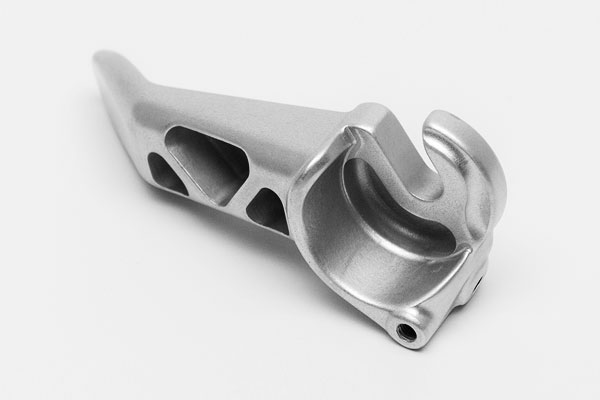
Ikkastjar tar-ramel:
Ikkastjar tar-ramel involves creating a mold cavity in a sand mixture using a pattern of the desired part.
Molten magnesium alloy is then poured into the mold. Sand casting is suitable for producing large-scale parts and parts with complex geometries that are difficult to produce by other casting methods.
Madankollu, it generally has lower dimensional accuracy and surface finish compared to die casting.
Ikkastjar ta 'investiment:
Ikkastjar ta 'investiment, Magħruf ukoll bħala l-ikkastjar tax-xama mitlufa, is used for producing high-precision magnesium alloy parts with intricate details.
A wax model of the part is made, coated with a ceramic shell, and the wax is melted out.
Molten magnesium alloy is then poured into the resulting cavity.
Investment casting allows for the production of parts with excellent surface finish and dimensional accuracy, but it is a more expensive and time-consuming process compared to die casting and sand casting.
Wrought processing: rolling, estrużjoni, Forġa, severe plastic deformation (ECAP)
Rolling:
Rolling is a common wrought process for magnesium alloys. It can be carried out at room temperature (cold rolling) or at elevated temperatures (Rolling sħun).
Cold rolling improves the strength and hardness of the alloy but reduces its ductility, while hot rolling allows for better formability.
Rolled magnesium alloy sheets are used in applications such as automotive body panels and electronic device casings.
Estrużjoni:
Extrusion involves forcing a magnesium alloy billet through a die to produce a continuous profile with a fixed cross-section.
Dan il-proċess huwa adattat għall-ħolqien ta 'prodotti bħal vireg, tubi, u diversi profili strutturali.
Extruded magnesium alloy products are used in aerospace, karozzi, and other industries where lightweight and high-strength components are required.
Forġa:
Forging is a process in which a magnesium alloy is shaped by applying compressive forces, normalment jużaw imrietel jew preses.
It improves the mechanical properties of the alloy by refining the grain structure and eliminating internal defects.
Forged magnesium alloy parts are used in critical applications such as aerospace structural components and high-performance automotive parts.
Severe plastic deformation (ECAP-Equal Channel Angular Pressing):
ECAP is a relatively new processing technique for magnesium alloys. It involves subjecting the alloy to large-strain plastic deformation without changing its cross-sectional area.
ECAP can produce a very fine-grained microstructure in magnesium alloys, leading to significant improvements in mechanical properties such as strength and ductility.
Additive manufacturing prospects (SLM, EBM)
Tdub selettiv bil-lejżer (SLM):
SLM is an additive manufacturing technique where a laser selectively melts layers of magnesium alloy powder to build a three-dimensional part.
It offers the potential to produce complex geometries with high precision and can be used for rapid prototyping and the production of custom-made components.
Madankollu, challenges such as powder handling, porosity control, and ensuring the mechanical properties of the printed parts need to be addressed.
Electron Beam Melting (EBM):
EBM uses an electron beam to melt and fuse magnesium alloy powder layers. It operates in a vacuum, which helps to reduce oxidation and improve the quality of the manufactured parts.
EBM is suitable for producing large-scale components and has the advantage of faster processing speeds compared to SLM in some cases.
Makkinabilità, welding challenges, and weld repair
Makkinabilità:
CNC Machining magnesium alloys can be challenging due to their low density and high reactivity.
They have a tendency to form long, stringy chips during cutting, which can interfere with the machining process.
Special cutting tools and techniques, such as using sharp tools, high cutting speeds, and proper coolant, are required to machine magnesium alloys effectively.
Welding challenges:
Welding magnesium alloys is difficult because of their high reactivity, punt ta 'tidwib baxx, and tendency to form oxides.
Kwistjonijiet bħall-porożità, qsim, and loss of mechanical properties in the weld zone are common.
Different welding techniques, such as laser welding, TIG welding, Iwweldjar MIG, and friction stir welding, are used to overcome these challenges.
Weld repair:
Weld repair of magnesium alloys requires careful preparation and the use of appropriate welding procedures.
The repair process needs to ensure that the mechanical properties and corrosion resistance of the repaired area are restored to an acceptable level.
8. Tgħaqqad & Assemblaġġ
Iwweldjar (laser, Tig, Jien) and solid-state techniques (frizzjoni ħawwad iwweldjar)
Iwweldjar bil-lejżer:
Laser welding offers high-speed processing and narrow heat-affected zones, which helps to minimize distortion and maintain the mechanical properties of magnesium alloys.
Madankollu, it requires precise control of parameters such as laser power, welding speed, and focal position.
In a study on laser welding of AZ31 magnesium alloy, proper parameter selection led to joints with tensile strengths reaching up to 85% of the base metal strength.
Tig (Gass inert tat-Tungstenu) iwweldjar:
TIG welding provides good control over the welding process, allowing for the production of high-quality welds. It is suitable for thin-walled magnesium alloy components.
Madankollu, it has relatively low welding speeds and requires skilled operators. Argon gas shielding is essential to prevent oxidation during TIG welding of magnesium alloys.
Jien (Gass inert tal-metall) iwweldjar:
MIG welding is a more automated and faster process compared to TIG welding, making it suitable for mass production.
It uses a consumable wire electrode, which can also introduce alloying elements to improve the weld quality.
But, it may produce more spatter and requires careful adjustment of parameters to ensure good fusion.
Friction stir welding (FSW):
FSW is a solid-state welding technique that has shown great promise for magnesium alloys.
It generates heat through friction between a rotating tool and the workpiece, without melting the material.
This results in welds with excellent mechanical properties, porożità baxxa, u reżistenza tajba għall-korrużjoni.
FSW is increasingly being used in the aerospace and automotive industries for joining magnesium alloy components, especially for large-scale structures where traditional fusion welding methods may cause significant distortion.
Brazing and soldering considerations
Brazing and soldering of magnesium alloys require careful selection of filler materials and fluxes.
The melting point of the filler material should be lower than that of the magnesium alloy to ensure proper bonding without melting the base metal.
Fluxes are used to remove surface oxides and promote wetting.
Pereżempju, silver-based brazing filler metals can be used for magnesium alloys, but they require specific fluxes to prevent oxidation during the brazing process.
Saldjar, Min-naħa l-oħra, is more suitable for joining thin-walled or small-sized magnesium alloy components.
Tin-based solders with appropriate fluxes are commonly used, but the joint strength is generally lower compared to brazing and welding.
Adhesive bonding and mechanical fastening strategies
Qfil mekkaniku:
Mechanical fastening methods such as screws, boltijiet, and rivets are commonly used to join magnesium alloy components.
When using screws and bolts, self-tapping screws are often preferred as magnesium alloys are relatively soft.
Madankollu, over-tightening should be avoided to prevent thread stripping or cracking of the material.
Rivets can provide strong and reliable joints, especially in applications where vibration and shear forces are present.
Adhesive bonding:
Adhesive bonding offers several advantages for magnesium alloys, including the ability to bond dissimilar materials, reduce stress concentrations, and provide a smooth surface finish.
Epoxy-based adhesives are widely used due to their high strength and good chemical resistance.
Surface preparation is crucial for successful adhesive bonding.
Processes such as sandblasting, inċiżjoni kimika, and primer application can improve the adhesion between the adhesive and the magnesium alloy surface.
In automotive interior applications, adhesive-bonded magnesium alloy components can reduce weight and noise levels.
9. Key Applications of Magnesium Alloy
Magnesium alloys are prized across numerous industries for their exceptional strength-to-weight ratio, electromagnetic shielding, u vibration-damping characteristics.
As the lightest structural metal (density ~1.74 g/cm³), they are increasingly replacing heavier materials like steel and even aluminum in weight-sensitive applications.
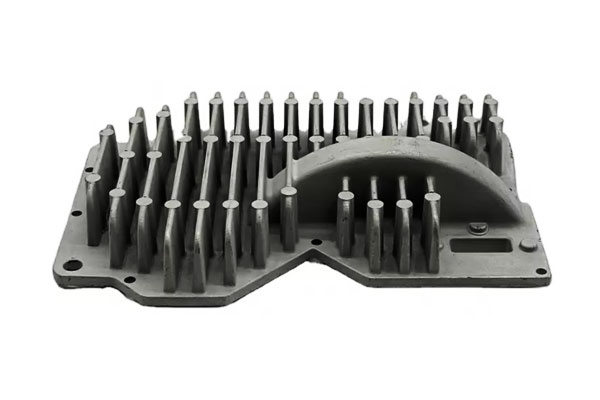
Industrija tal-Karozzi
The automotive sector is the largest consumer of magnesium alloys, driven by global goals for fuel efficiency and emission reductions.
Applikazzjonijiet ewlenin:
- Powertrain components: Transmission cases, clutch housings, oil pans
- Chassis and suspension: Cross members, steering wheels, brake pedals
- Body parts: Dashboards, seat frames, roof panels (rolled Mg sheets)
Aerospazjali
Magnesium’s low density, good stiffness, and excellent machinability make it suitable for aerospace components where weight savings are critical.
Applikazzjonijiet:
- Aircraft interiors: Seat frames, overhead bins, floor panels
- Airframe structures: Helicopter gearboxes, wing access panels
- Defense systems: Drone (UAV) airframes
Elettronika & Consumer Devices
Magnesium alloys offer Protezzjoni EMI, konduttività termali eċċellenti, and lightweighting—ideal for compact, heat-sensitive devices.
Typical Uses:
- Laptop & tablet chassis
- Smartphone casings
- Housings tal-kamera
- Cooling enclosures for high-performance servers and routers
Applikazzjonijiet Mediċi
Biocompatible magnesium alloys, especially Mg–Ca u Mg–Zn sistemi, are revolutionizing resorbable medical implants.
Eżempji:
- Orthopedic screws and plates (resorb over 12–24 months)
- Cardiovascular stents
- Scaffolds for tissue engineering
Architectural and Industrial Hardware
Magnesium is used in select structural and functional components requiring ħafifa, reżistenti għall-korrużjoni prestazzjoni:
- Pumi tal-bibien, ċappetti, and locks
- Electric power tool housings
- Structural supports for elevators and escalators
Oġġetti Sportivi & Lifestyle Products
Magnesium alloys are increasingly used in premium sporting goods, where performance, Reżistenza għall-għeja, and weight matter.
Oġġetti Komuni:
- Bicycle frames and wheels
- Tennis racquets and golf club heads
- Archery equipment and fishing reels
- Sunglass frames, suitcases, and briefcases
Marine & Off-Highway Use
While magnesium is reactive to saltwater, protective coatings u alloying enable its use in:
- Boat steering wheels and seat frames
- Off-highway vehicle components (ATVs, snowmobiles)
- Military marine parts with sacrificial anode designs
10. Vantaġġi & Limitations of Magnesium Alloy
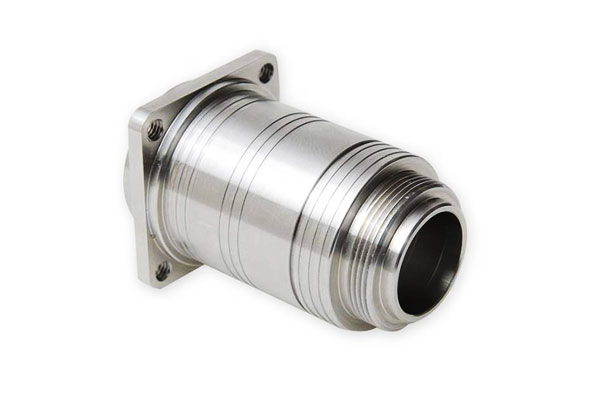
Advantages of Magnesium Alloys
- Ultra-Lightweight
Magnesium is the lightest structural metal (~1.74 g/cm³), ~33% lighter than aluminum and 75% lighter than steel. - Proporzjon għoli ta 'saħħa għal piż
Offers excellent mechanical performance relative to its mass, ideal for aerospace and automotive applications. - Makkinabilità tajba
Can be machined at high speeds with less tool wear compared to other metals, reducing production time and cost. - Excellent Vibration Damping
Naturally absorbs vibrations, making it valuable for automotive parts and electronics. - Superior Electromagnetic Shielding
Effectively blocks electromagnetic interference (Emi), essential for electronic device housings. - Riċiklamat
Magnesium alloys are fully recyclable with minimal degradation in properties. - Bijokompatibilità
Certain magnesium alloys (E.g., Mg–Ca, Mg–Zn) are resorbable and suitable for temporary medical implants. - Improved Die-Casting Characteristics
Ideal for complex-shaped parts with thin walls; faster solidification than aluminum.
Limitations of Magnesium Alloys
- High Corrosion Susceptibility
Without proper coatings or alloying, magnesium corrodes easily—especially in saltwater environments. - Limited Room Temperature Ductility
Prone to cracking during forming or impact; alloying and thermomechanical processing help mitigate this. - Flammability Risk in Powder Form
Magnesium dust or fine chips are flammable; requires strict fire safety protocols during machining. - Challenging Weldability
Oxide formation, porożità, and cracking can occur during welding; requires specialized techniques (E.g., Tig, frizzjoni ħawwad iwweldjar). - Lower Creep Resistance at High Temperatures
Performance degrades faster under prolonged heat and stress compared to aluminum or titanium alloys. - Cost of Alloying Elements
Alloys using rare earth elements (E.g., WE-series) or zirconium can be expensive.
11. Comparison of Magnesium Alloys with Competing Materials
| Proprjetà / Karatteristika | Ligi tal-manjeżju | Ligi tal-aluminju | Ligi tat-titanju | Ligi taż-żingu | Plastics tal-Inġinerija |
| Densità (g / cm³) | ~1.74 | ~2.70 | ~4.43 | ~6.6–7.1 | ~0.9–1.5 |
| Qawwa tat-tensjoni (MPA) | 150–350 | 200–550 | 600–1000+ | 150–400 | 50–200 |
| Modulu ta 'Young (GPA) | ~45 | ~70 | ~110 | ~85 | ~2–5 |
| Konduttività termali (W / m · k) | ~60–160 | ~120–230 | ~7–16 | ~90–120 | ~0.2–0.5 |
| Reżistenza għall-korrużjoni | Poor to moderate | Good with coatings | Eċċellenti | Moderat | Eċċellenti |
| Makkinabilità | Eċċellenti | Tajjeb | Poor to moderate | Tajjeb ħafna | Tajjeb |
| Riċiklamat | Eċċellenti | Eċċellenti | Moderat għal tajjeb | Eċċellenti | Limitat (depends on type) |
| Bijokompatibilità | Eċċellenti (specific grades) | Tajjeb | Eċċellenti | Fqir | Varies widely |
| Cost per kg (USD) | $2–$4 | $2–$5 | $20–$40 | $1.5–$3 | $1–$10 (varies by polymer) |
| Weight Saving Advantage | ⭐⭐⭐⭐ | ⭐⭐⭐ | ⭐⭐ | ⭐ | ⭐⭐⭐⭐⭐ |
| Die-Castability | Eċċellenti | Tajjeb | Fqir | Eċċellenti | N / a |
Key Comparative Insights
- Magnesium vs. Aluminju:
Magnesium alloys are ~35% lighter than aluminum and easier to machine, but they offer lower strength and poorer corrosion resistance unless treated.
Aluminum has better high-temperature stability and broader use in aerospace. - Magnesium vs. Titanju:
Titanium alloys provide superior strength and corrosion resistance but are extremely expensive and difficult to machine.
Magnesium is significantly lighter and cheaper, but not suitable for high-stress, high-temperature environments. - Żingu vs. Ligi tal-manjeżju:
Zinc alloys are heavier and more dimensionally stable, with excellent castability.
Magnesium is lighter and better suited for applications needing weight reduction, though more corrosion-prone. - Magnesium vs. Plastics tal-Inġinerija:
Plastics are lighter and corrosion-proof but lack the mechanical strength and thermal performance of magnesium.
Magnesium offers better electromagnetic shielding and structural integrity.
12. Konklużjoni
Magnesium alloys have come a long way since their initial development, evolving into a versatile class of materials with a wide range of applications.
Their unique combination of properties, bħal proporzjon għoli ta 'saħħa għall-piż, vibration-damping characteristics, and electromagnetic shielding, makes them highly valuable in industries ranging from aerospace and automotive to electronics and medicine.
Madankollu, challenges such as corrosion susceptibility and low room-temperature ductility still need to be addressed.
Through continuous research and development efforts, significant progress has been made in areas such as alloy chemistry, Proċessi tal-manifattura, surface protection, and joining techniques.
Novel alloy chemistries, advanced surface treatments, and emerging manufacturing technologies offer promising solutions to overcome these limitations and further expand the application scope of magnesium alloys.
FAQs
What Are Magnesium Alloys?
Magnesium alloys are lightweight structural metals made by combining magnesium with elements like aluminum, Żingu, manganiż, and rare earths.
They offer excellent weight reduction and are used in automotive, aerospazjali, elettronika, u oqsma mediċi.
Is Magnesium Alloy Better Than Aluminum?
Depends on the application:
- Manjesju is ~33% lighter and easier to machine.
- Aluminju is stronger and more corrosion-resistant.
Choose magnesium for lightweight needs, and aluminum for strength and durability.
What Is the Best Magnesium Alloy?
The “best” alloy varies by industry. Here are some top performers:
- AZ91D – Most commonly used casting alloy with good strength, Reżistenza għall-korrużjoni, u castability.
- ZK60 – High-strength wrought alloy used in aerospace and motorsport components.
- Elektron 21 / Elektron WE43 – Advanced rare-earth alloys with high creep resistance and thermal stability for aerospace.
- AZ31B – Versatile, weldable, and widely used for rolled sheet and extrusions.
Is Magnesium Alloy Stronger Than Titanium?
LE. Titanium is much stronger and more corrosion-resistant, but also heavier and more expensive. Magnesium is used when weight savings are more important than maximum strength.



